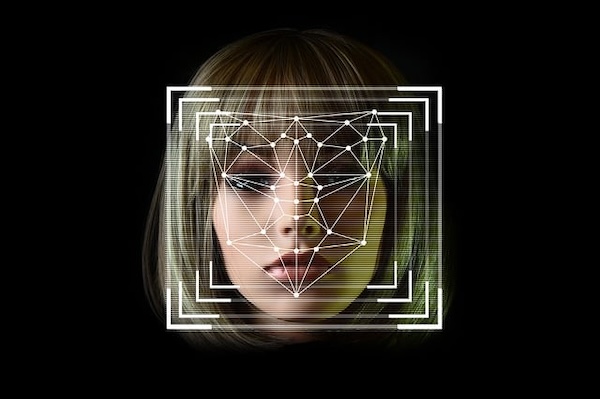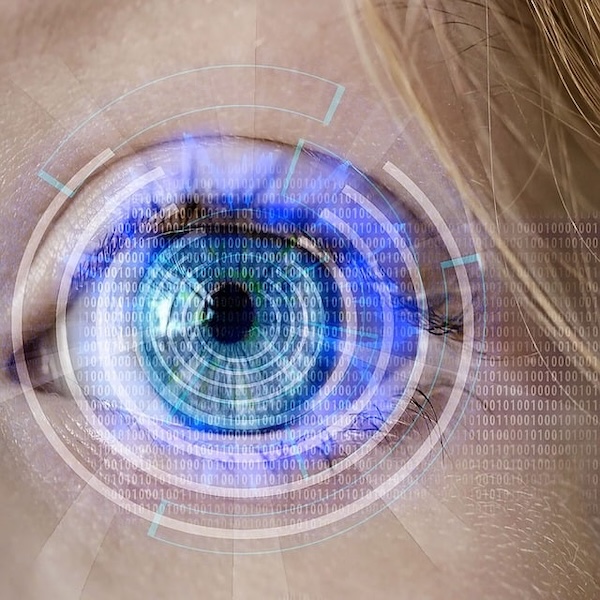FILE - Vision in facial recognition: Towards a world without anonymity?

Facial recognition has become one of the most controversial technologies of our time. Used in everything from national security to personalized advertising, the technology relies on sophisticated algorithms that analyze facial features to identify a person. But at the heart of the technology is vision, an area where advances in optics play a crucial role. How are the principles of vision and optics integrated into facial recognition? What might the ethical implications be for privacy and surveillance? We discuss them in this new feature.
How does facial recognition work?
Facial recognition is a sophisticated process that begins with capturing an image or video of the face. This crucial step is done using standard, infrared cameras or 3D scanners that capture not only the general appearance of the face, but also more subtle details like depth and texture. Once the image is obtained, a detection algorithm locates the face and separates it from the rest of the image, thus focusing the system on the relevant elements.
Then, the algorithm extracts specific features of the face, such as the distance between the eyes, the shape of the nose, or the curve of the lips. These distinctive features are transformed into a biometric template, a unique digital representation of the face. This template is compared to a pre-existing database to identify a potential match, a process that relies on advanced machine learning techniques to improve accuracy.

The efficiency of this process largely depends on the quality of vision, in particular the resolution of the captured image. A high-resolution image allows to capture fine details of the face, thus increasing the reliability of recognition. In addition, lighting conditions play a determining role: optimal lighting helps to minimize shadows and reflections, which could otherwise compromise the accuracy of facial feature detection.
Thus, advances in optics are at the heart of the development of facial recognition systems, improving both the accuracy of image captures and the robustness of comparison algorithms. However, these advances raise ethical questions, in particular concerning the use of this technology in surveillance contexts.
Facial Recognition: Applications and Ethical Challenges

Facial recognition has quickly become a mainstream technology in a variety of fields, from public safety to marketing. In security, the technology is used to identify individuals at airports, monitor crowds at public events, and even prevent crime by detecting potential suspects in real time. In the retail sector, it can personalize shopping experiences by analyzing customers’ facial expressions to tailor offers and ads accordingly. Smartphones and other personal devices also use facial recognition to unlock devices and secure transactions, making the technology ubiquitous in our daily lives.
However, these applications raise serious ethical questions. The main issue is privacy. The ability to monitor and identify individuals without their consent poses a significant risk to individual freedoms. Facial recognition can be used for mass surveillance, where every move is tracked, potentially without individuals being aware of it. In addition, algorithmic biases inherent in some systems can lead to misidentification, disproportionately affecting ethnic minorities and marginalized groups, exacerbating inequalities.
Lack of consent and transparency compounds these concerns. Individuals are often unaware that they are being filmed and analyzed, raising questions about the control of their biometric data. These challenges require a robust legislative framework to regulate the use of facial recognition, thus protecting the rights of individuals while enabling responsible technological advances. The debate between security and privacy remains central to the evolution of this technology. An optical advance that could put us at risk?
Towards a world without anonymity?

Facial recognition, which is constantly evolving, raises crucial questions about the future of anonymity in public spaces. With increasingly sophisticated algorithms, the technology is becoming capable of identifying individuals with increasing accuracy, even in conditions that were once considered difficult, such as unconventional viewing angles or dimly lit environments. As this technology becomes more integrated into our daily lives, the line between security and intrusion is becoming blurred.
A major risk is the possibility of living in a world where every movement is tracked, recorded, and potentially analyzed in real time. This level of surveillance could transform public spaces into zones of permanent control, making anonymity all but impossible. Moreover, the widespread adoption of facial recognition by governments and businesses raises concerns about the gradual erosion of privacy. In this context, even the most mundane activities could be subject to constant monitoring, which could dissuade individuals from expressing themselves freely or participating in protests, for example.
However, technological alternatives and regulations are beginning to emerge. Some companies and governments are exploring less invasive solutions, such as anonymizing data or using decentralized identification methods that limit the collection of personal information. At the same time, legislative frameworks are under discussion in many countries to limit the use of facial recognition, ensuring a balance between security and respect for individual freedoms.
In short, the future of facial recognition poses a major challenge: how to benefit from technological advances without sacrificing the fundamental principles of privacy and individual freedom? The answer to this question will largely define the society of tomorrow.
Facial recognition, by integrating advances in optics and vision, pushes the boundaries of what is possible in terms of security and convenience. However, it also introduces major challenges in terms of privacy and freedom. As technology continues to advance, the ethical question of the world we want to create becomes more pressing: are we willing to sacrifice anonymity for greater security and convenience?


